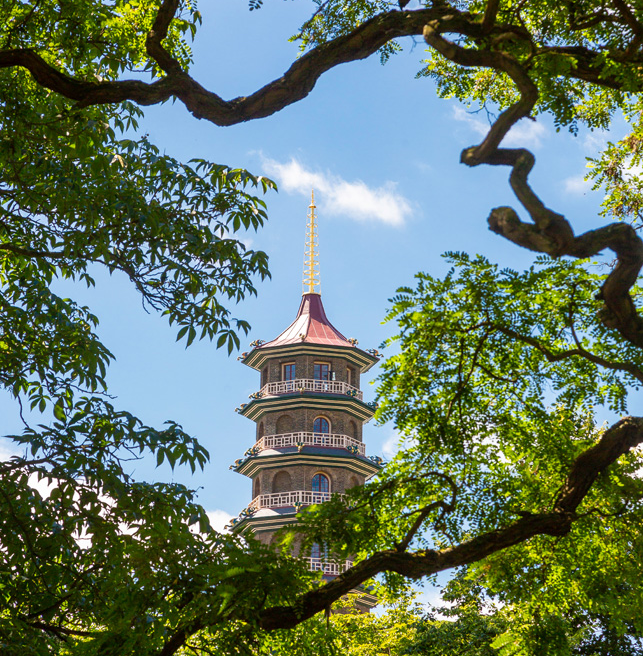A recent trip to see the restoration work on the Great Pagoda at Kew Gardens has got Al Dean thinking about how future generations will see today’s design and engineering projects. Will they be viewed as worthwhile?

The Great Pagoda at Kew. If you’re in town, it’s worth a visit
Despite what you might think, we don’t get invited to fancy press events much these days. While the golden age of CAD in the late 90s made the fancy jolly an almost weekly event, these days, we’re more likely to spend a day on an industrial park in Doncaster than eating at a fancy restaurant in the big smoke.
So it was with some eagerness that I accepted 3D Systems’ invitation to visit Kew Gardens; specifically, to take a look at the work its On Demand Manufacturing team, based in High Wycombe, has undertaken in partnership with the curatorial team at Historic Royal Palaces, to restore Kew’s Great Pagoda to its 18th-century splendour.
On page 28 of this issue, we look at how the two organisations worked together, not only to capture a realistic idea of how the original dragons might have looked, but also to use some of the most advanced 3D printing technology to bring these fabulous beasts back to Kew.
I found the whole enterprise fascinating. For example, curators had to track down a privately owned painting that held clues to how the Pagoda and its dragons once looked. Apparently, all they had to go on was this painting, some of Sir William Chambers’ original design drawings for the Pagoda and some descriptions drawn from period poetry about Kew Gardens.
Then the science kicked in. Paint samples were analysed. New dragons were crafted from African cedar, laser-scanned and redesigned, then adapted and manufactured using state-of-the-art SLS 3D printing.
Now, if you visit Kew and take a walk across the park to the Pagoda, you’ll find that it’s been lovingly restored using a mix of traditional and seemingly futuristic methods, brought together with some old-school engineering ingenuity.
Originally completed in 1762, it has since given countless generations pleasure. Now, thanks to this project, many generations more will enjoy it.
But, as with all such journeys and experiences, you’re often brought straight back down to earth with a thump.
On my return ride to Euston to grab my train back north, I gazed out of the window and saw what remains of Grenfell Tower, now covered in its white shroud. The difference couldn’t be more stark.
The Great Pagoda was a vanity project for a wealthy Royal family. Grenfell was, as we’re all aware, the scene of the deadliest structural fire in the United Kingdom since the 1988 Piper Alpha disaster.
Both are large structures, albeit built for very different purposes. One is a rich man’s folly, the other represented home for its hundreds of inhabitants. One was built without much regard for cost, the other was built and maintained disgustingly poorly, with corners cut on health and safety in the interests of economising. 72 residents paid the price with their lives.
This contrast made me think of the things that we create today: the buildings we construct and the products we design and manufacture. How will they be percieved in 100 years or a quarter of a millenium?
Will products that are manufactured today, stand the test of time? If they do, will future generations view them as a triumph of our time or will they be seen as the result of a planet’s population that is selfish, self-obsessed and has no regard for its home’s finite resources?
In other words, how can we make and build for longevity? It’s a sobering thought.
Will what’s being produced today be viewed as worthwhile?
Default






